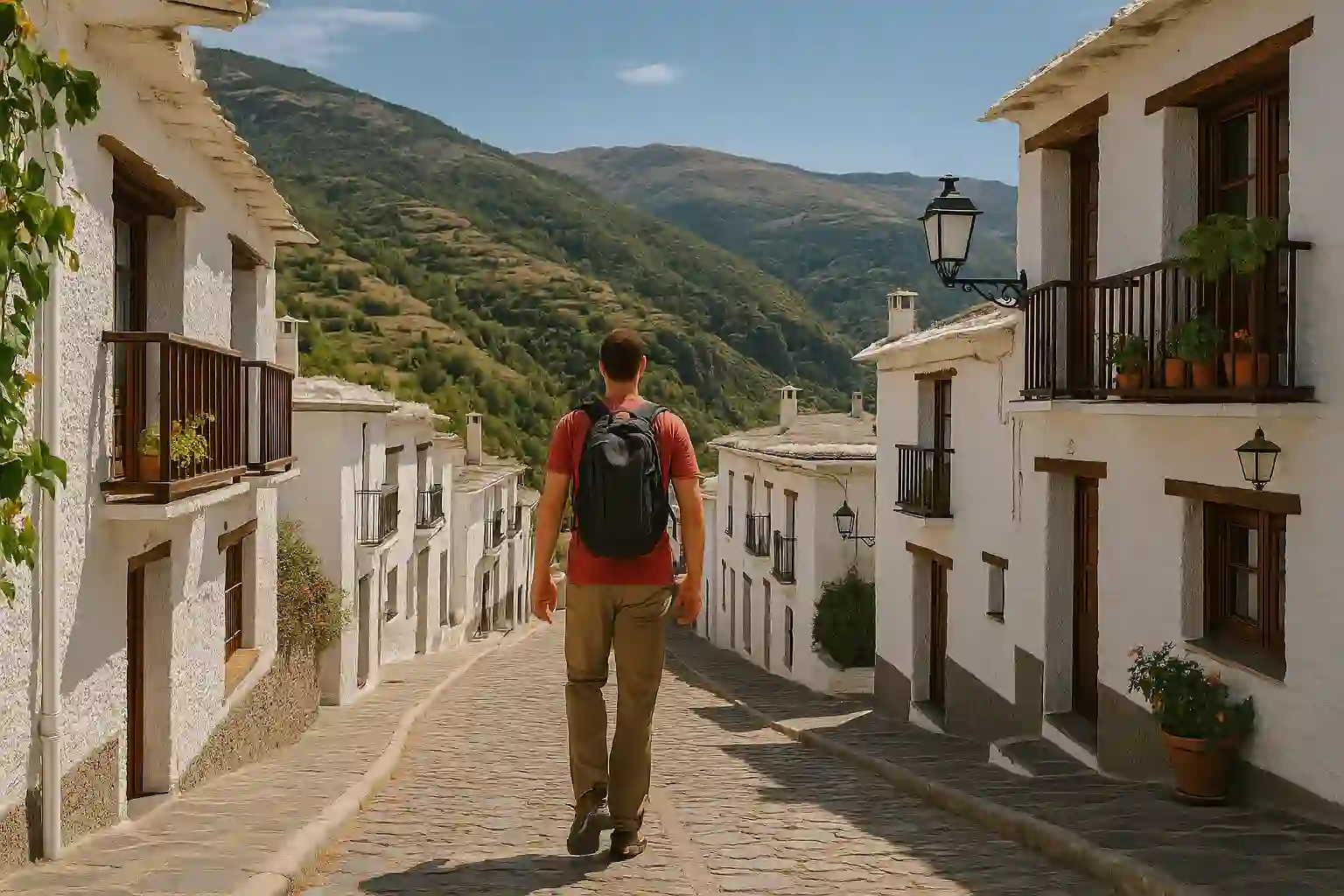From Granada to the Alpujarra – White Villages & Mountain Life

1. The Road into the Alpujarra
Leaving Granada, the road climbs through almond orchards and olive terraces before reaching the cool mountain air of the Sierra Nevada’s southern flank. The Alpujarra was once the last refuge of the Moors after the fall of the Alhambra — its terraced hillsides and irrigation channels still follow Nasrid engineering.
On clear days, the Mediterranean glimmers on the horizon while mule paths wind through chestnut woods and white hamlets. The villages appear almost suspended between earth and sky.
2. Pampaneira, Bubión & Capileira
These three villages form the heart of the high Alpujarra. Pampaneira greets visitors with woven rugs, ceramics and narrow alleys full of artisan shops. Bubión sits quieter, with small cafés and views across the Poqueira Valley, while Capileira crowns the route with its stone chimneys and spectacular outlooks towards Mulhacén, Spain’s highest peak.
Their architecture, with flat roofs and irregular chimneys, shows a clear Berber influence — a reminder of North African roots that still define local identity.
3. Flavours of the Mountains
Traditional taverns offer jamón serrano from Trevélez, mountain honey, and hearty stews with local beans and potatoes. Lunch is unhurried; each dish comes with stories of family farms and handmade recipes. Many tours include a tasting or a stop at a small bodega to sample regional wines.
4. Craft & Daily Life
The Alpujarra’s artisans continue centuries-old trades — weaving, pottery and wood carving. Small workshops line the lanes, and visitors can often watch the process behind the colourful textiles known as jarapas. Local markets sell herbal remedies and almond sweets shaped by monastic traditions.
Time seems to slow here: conversations stretch, bells mark the hours, and the mountain silence invites calm.
A journey to the Alpujarra is more than a scenic drive — it’s a lesson in resilience and simplicity, where Granada’s history meets the serenity of the mountains.
